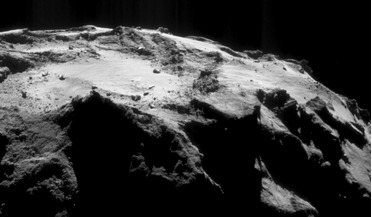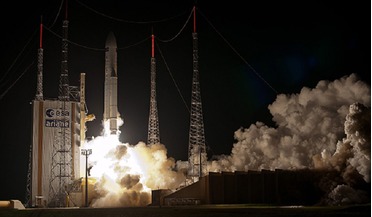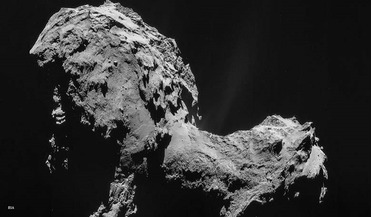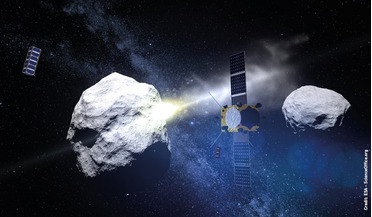 March 2017
Rosetta – outstanding climax to pioneering mission
March 2017
Rosetta – outstanding climax to pioneering mission
... in accuracy and stability. They used new optical navigation techniques - identifying landmarks on the camera pictures of the comet and using them for triangulations to determine the position and velocity of the spacecraft relative to the surface...
 25 September 2015
67P/Churyumov-Gerasimenko’s Imhotep region: conditions change rapidly on comet’s surface
25 September 2015
67P/Churyumov-Gerasimenko’s Imhotep region: conditions change rapidly on comet’s surface
... is known as the Imhotep region (named after the Egyptian polymath and high priest of the sun god Ra) of comet 67P/Churyumov-Gerasimenko were recently recorded by Rosetta. New features were expanding “by a few tens of centimetres per hour,” according...
 August 2016
Rosetta overcomes major setback
August 2016
Rosetta overcomes major setback
... for the two short fly-bys of asteroids Steins in 2008 and Lutetia in 2010. The new target - Comet 67P Churyumov- Gerasimenko imaged from ground telescopes in 2003. All these activities kept us busy for months of preparation but were...
 August 2017
Big science from small spacecraft
August 2017
Big science from small spacecraft
...and will require a higher standard of reliability: ESA’s flagship Rosetta mission took 10 years to rendezvous with comet 67P/Churyumov–Gerasimenko. Such long mission durations are not unusual when we plan missions to chase the so-called ‘short-period...
 15 June 2015
Rosetta’s Philae lander awakens
15 June 2015
Rosetta’s Philae lander awakens
... is great news due to the major importance of the Rosetta mission, which is doing a detailed study of the comet 67P/Churyumov–Gerasimenko. The study of comets is not merely the study of faraway worlds – it can also provide vital clues about life here...
 October 2015
Taking AIM with ESA: proposing the first visit to a binary asteroid system
October 2015
Taking AIM with ESA: proposing the first visit to a binary asteroid system
...target). It then took another 10 years’ worth of planetary flybys to finally achieve its triumphant rendezvous with Comet 67P/Churyumov–Gerasimenko. The AIM spacecraft observes NASA’s DART mission smashing into one half of the Didymos binary asteroid...